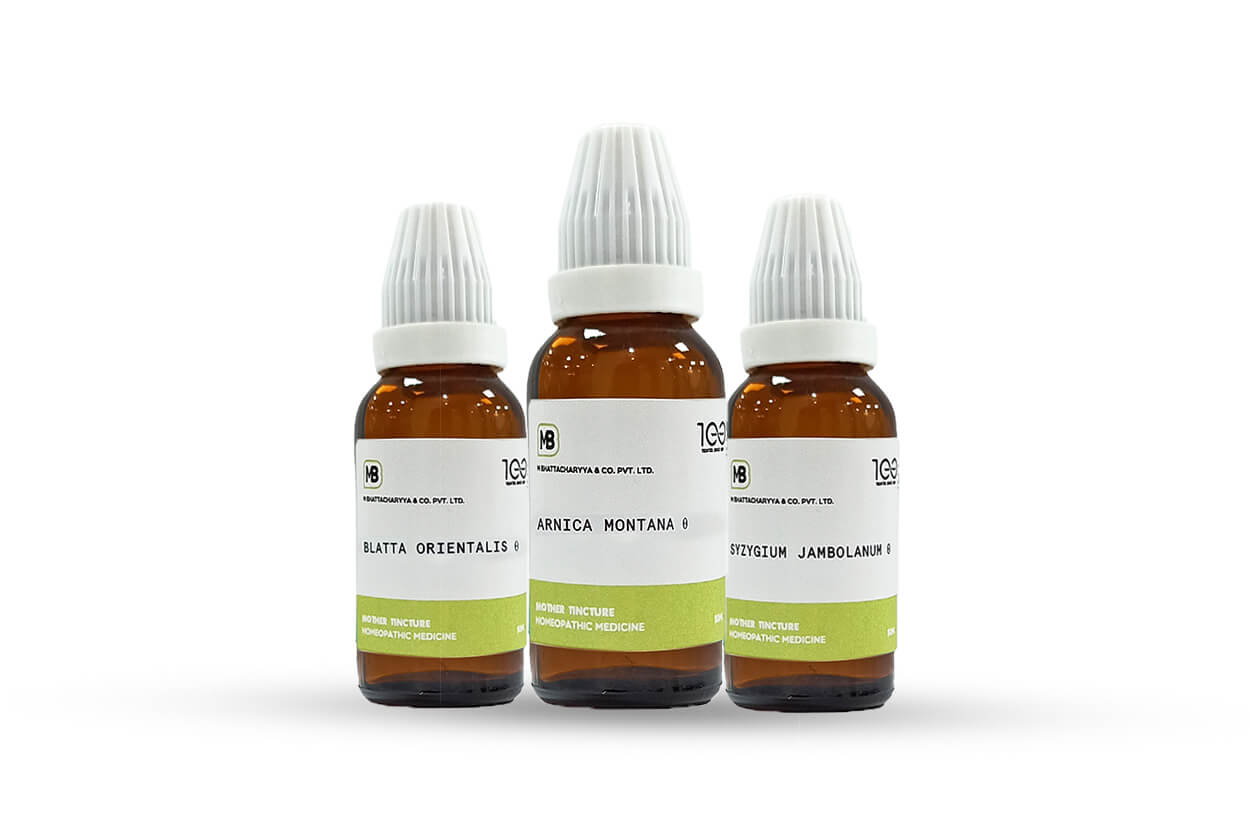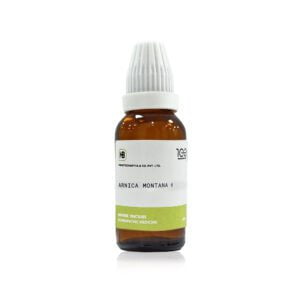Cepa. Common Red Onion. N. O. Liliaceae. Tincture of the onion; or of whole fresh plant gathered from July to August.
Clinical.-Anus, fissure of. Ascites. Catarrh. Cold. Coryza. Cough. Diarrhoea. Facial paralysis. Feet, easily galled. Hay-fever. Hernia. Influenza. Laryngitis. Panaritium. Pneumonia. Trauma. Whitlow. Whooping-cough. Yellow fever.
Characteristics.-Allium cepa covers more symptoms of common cold than any other remedy, as the well-known effect of onions in producing tears would suggest. It will cure a large proportion of cases of cold in the head, but the conditions which most particularly indicate it are: Cough, or cold, or headache < in warm room, > in open air, < again on returning to warm room. It causes burning of eyelids, nose, mouth, throat, bladder, skin. Inflammation and increased secretion of mucous membranes: neuralgic pains like a long thread; in face, head, neck, and elsewhere; < evening; towards ear from deep within head. The toothache of Cepa is > by cold air or cold washing. It is suited to traumatic neuritis. Hurts do not heal. The feet are easily galled by walking. It was recommended by Dioscorides as a remedy for this condition, and homoeopathy has confirmed his observation. Desire for raw onions is an indication for it. Thread-like pains are common in various parts and are characteristic of Cepa. Thread-like pains in face. Left-side facial paralysis has been cured by Cepa. The cough of Cepa is caused by tickling in larynx; constant inclination to hack in order to relieve it. It has cured violent catarrhal laryngitis; hoarse cough with feeling as if it would split and tear the larynx, causing watering of eyes. Cough from inhaling cold air. Cepa has yawning and drowsiness. A raw onion eaten just before going to bed is a popular remedy for sleeplessness. Cepa is a left-side medicine primarily. Symptoms go from left to right. Left eye; left facial paralysis; left inguinal ring. Rest . < Afternoon and evening; when lying down. Damp cold wind and weather = colds and toothache. But cold water and open air >; warm room < Picking or sucking teeth > toothache. Eyes sensitive to touch.
Relations.-Compare: Al. sat., Alo., Conval., Lil. tig, Scilla (botan.); Antidoted by: Arn. (toothache); Cham. (abdominal pains); Nux v. (coryza recurring in August); Verat. (colic, with despondency); Thuja (offensive breath and diarrhoea after eating onions). Roasted coffee will remove onion breath. Followed by Calc. c. and Silic. in polypus. Incompatible: All. sat., Alo., Scilla. Complementary: Phos., Puls., Sars., Thuj. Compare also: Aco., Chlorum, Ipec.; Lach. (left to right).
Causation.-Effects of exposure to damp cold winds and weather. Colds of spring; hay-fever of August; epidemics of spasmodic cough in autumn. Wet feet. Eating spoiled fish. Injuries. Surgical operations (fine shooting pains after).
SYMPTOMS.
1. Mind.-Very melancholy.-Fears pains will become unbearable.-Often very anxious, with catarrh, dulness of intellect.
2. Head.-Dulness.-Dull headache, with coryza, < in the evening; > in the open air; but < when returning to a warm room.-Pains in temples, most in right; aggravated by winking; extending over forehead, worse on l. side.-Pain in occiput and down the neck.
3. Eyes.-Flow of (mild) tears.-Excessive non-excoriating lachrymation; l. eye worse, with redness of the eyeball; sensitive to light; worse evenings.-Sensation as if eye were hanging by a string or torn.-Itching, biting, burning in the eyes.-Dulness of the eyes, with aversion to light, and coryza.-Letters appear smaller.-Near objects seem distant with yawning.-Swelling around the eyes.
4. Ears.-Earache.-Discharge of pus from the ear.-Hardness of hearing.
5. Nose.-Profuse watery discharge from the nose, with sneezing, acrid burning, excoriating the nose and upper lip.-Fluent coryza, with running of water from the eyes, headache, heat, thirst, cough, trembling of the hands; < in evening and in a room; > in the open air.-Ichor oozing out of nose; second stage of scarlatina.-Bleeding of the nose.-A sort of hay-fever every August, morning coryza, violent sneezing, sensitive to the odour of flowers and skin of peaches.-Nasal polypi.
6. Face.-Paralysis of l. half of face, also in limbs of same side.
9. Throat.-Sensation as of a lump in the throat.-Expectoration of a lumpy mucus through the posterior nares.-Pain in throat extending to the ear.-Bad odour from the mouth and throat.
11. Stomach.-Canine hunger.-Appetite, increased or diminished.-Strong craving for raw onions; cannot take any other nourishment.-Pressure in stomach.-Pain in region of pylorus.-Thirst, with heat and coryza.-Nausea, coming from stomach up the throat into the fauces.-Weak, empty feeling in stomach.-Sour eructations.
12. Abdomen.-Rumbling in bowels.-Very offensive flatus.-Belching, with rumbling in and puffing up of the abdomen.-Violent cutting pain in the left lower abdomen, with frequent desire to micturate, and burning micturition.-Pains in hepatic region, spreading into the abdomen.-Violent pains in l. hypogastrium, with urging to urinate, urine scalding.-(Strangulated hernia has been known to follow the eating abundantly of cooked onions.).-Abdomen distended, rumbling, urging, and finally diarrhoea.
13. Stool and Anus.-Diarrhoea after midnight and in the morning.-Flatus very, offensive.-Haemorrhoids, tearing, jerking pains in anus.-Stitches in the rectum.-Rhagades at the anus.-Itching at the anus (worms).
14. Urinary Organs.-Strangury after wet feet.-Dribbling or spouting of urine in old people.-Frequent and copious urination.-Urine red, with much urging and burning in urethra.-Pressure and other pains in the region of the bladder.-Sensation of weakness in the bladder and urethra.
17. Respiratory Organs.-Oppressed breathing, from pressure in the middle of the chest; worse in the evening.-Cough when inhaling cold air.-Catarrhal hoarseness.-Acute bronchitis going from l. to r.-Tickling in throat, with aching in larynx.-Constant inclination to hack.-Hacking cough from inhaling cold air.-Violent catarrhal laryngitis; the hoarse cough seemed to split and tear the larynx.-Much sneezing; he inflates the lungs, raises himself on his toes, then gives a hearty sneeze.
20. Neck and Back.-Intense pain in nape of neck.-Chilly crawls run down the back, most at night, with frequent urination, followed by heat and thirst.
22. Upper Limbs.-Much pain under r. shoulder-blade.-Sore, tired feeling of the limbs, esp. arms.-Trembling of the r. hand.-Panaritium.-Painful affections of the fingers about the nails, red streaks running up the arm.
23. Lower Limbs.-Soreness; the skin is rubbed off by the shoes, esp. on the heel.-Pain on most external soft part of r. big toe and l. middle finger.
24. Generalities.-Stitches and burnings; aching.-Stitches (head, eyes, ears, rectum, skin).-Burning (eyelids, throat, nose, mouth, bladder, skin).-Bad effects from wet feet.-Phlegmasia alba dolens.-Traumatic neuritis, pains violent and continuous, wearing out patient.-Inflammation and increased secretions of the mucous membranes.-Senile gangrene.-Trismus after injuries.-Weak and tired; has to lie down.-Aching throughout the body.-Neuralgia from old injuries.-Neuralgic pains, like a long thread, in face, head, neck, and elsewhere; < evenings.
25. Skin.-Pricking as from pins.-Redness; nettle-rash, measles, scarlatina, when the complaints are characterised by the characteristic catarrhal symptoms.-Panaritia of lying-in females, red streaks running up arm, very painful.
26. Sleep.-Yawning; with headache and cramp in stomach; with sleepiness near objects seem distant.-Gaping in deep sleep.-Wakes 2 a.m.-Dreams of being near water; of battles, precipices, deep wells; of storms, high waves; annoying in convalescents.
27. Fever.-Pulse full and accelerated.-Heat, with rumbling in the abdomen, coryza, and thirst.-Flitting heat over whole body, and thirst.-Coldness alternates with heat during catarrh.-Sweats easily and copiously.



